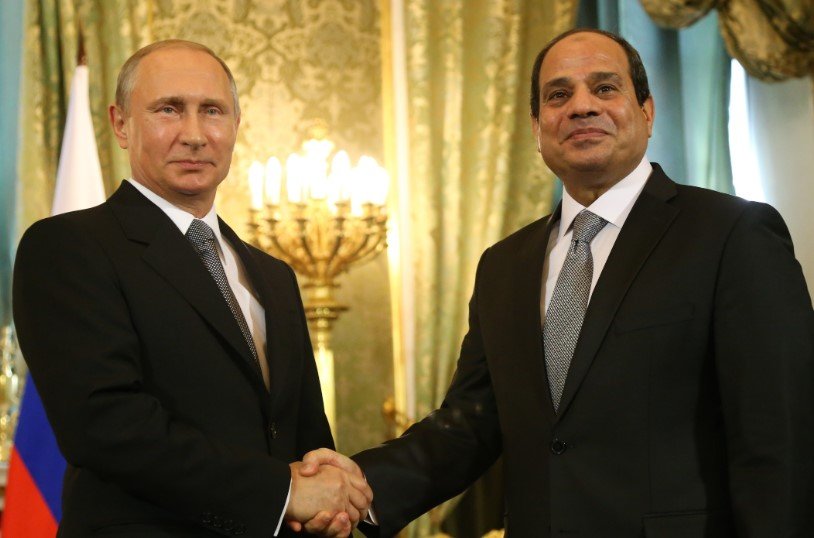Third containment tier installed in record time, as Cairo touts nuclear project as pillar of future energy independence
Cairo just notched a significant win in its nuclear energy ambitions.
Engineers have successfully installed the third and final segment of the inner containment structure at Unit 2 of Egypt’s El-Dabaa Nuclear Power Plant, wrapping up one of the most intricate and symbolically crucial construction feats on the project. It’s a big moment—not just for the country’s infrastructure calendar, but for its evolving energy strategy.
Completed on July 4 but only now confirmed by Rosatom, the Russian state atomic agency overseeing construction, the massive 44-meter-diameter tier represents more than just poured concrete and rebar. It’s a structural promise—a bet that Egypt’s 21st-century power grid will be cleaner, safer, and more self-reliant.
“This marks a significant milestone,” said Sherif Helmy, chairman of Egypt’s Nuclear Power Plants Authority (NPPA). And not just for the technical books. “It stands as a cornerstone of Egypt’s vision for a secure and sustainable energy future.”

Built Like a Fortress
For a country looking to transition from a fossil-heavy portfolio to a low-emissions mix, El-Dabaa is more than a prestige project. The inner containment (IC) structure alone—essentially the nuclear reactor’s last defense—offers a window into the scale and precision of what’s being built.
The third tier, which is now in place, consists of 12 colossal segments, each standing 9 meters tall and weighing between 40 and 100 tons. The largest single piece? A 17-meter-long monster segment that will eventually support the embedded transport airlock into the reactor building.
Installation required a 1,350-ton capacity heavy crane, operated by a team of 50 specialists working with a kind of rhythm only possible through exhaustive preparation. According to Rosatom, this IC tier includes the most complex geometries of any part of the structure.
“The fact that it was completed in just two weeks is frankly extraordinary,” Helmy added. “We owe that to both our Egyptian talent pool and the seamless coordination with Russian engineering.”
Rosatom’s African Push, in Context
The El-Dabaa facility is the centerpiece of Egypt’s partnership with Rosatom, whose presence in Africa has been growing more pronounced—not just through traditional nuclear plants but with new technologies like Small Modular Reactors (SMRs) and even floating nuclear platforms.
In a recent interview, Rosatom’s CEO for Central and Southern Africa, Ryan Collyer, noted the company’s increased focus on scalable, flexible energy solutions for the continent. “We’re particularly excited by what modular nuclear can offer Africa in terms of distributed generation and security,” he said.
But El-Dabaa is the full-scale version—a flagship. With four planned VVER-1200 reactors and a projected capacity of 4.8 GW, it is poised to be the largest nuclear facility in North Africa when completed.
Fast Facts: El-Dabaa Unit 2 Inner Containment Tier 3
| Feature | Details |
|---|---|
| Structure type | Third tier of inner containment (IC) |
| Diameter | 44 meters |
| Number of segments | 12 |
| Segment height | 9 meters |
| Segment weight | 40–100 tons |
| Heaviest single segment | 17 meters long; houses transport airlock |
| Installation duration | 2 weeks (completed July 4, 2025) |
| Main contractor | Rosatom (Russia) |
| Crane used | 1,350-ton heavy lift crane |
| Egyptian workforce involved | 50+ installation specialists |
A Race Against Energy Insecurity
This milestone couldn’t come at a more pivotal time. Egypt’s growing electricity demand, driven by population growth and urbanization, is putting enormous pressure on its aging thermal plants. Add in climate volatility, and the country’s reliance on natural gas has become a strategic vulnerability.
That’s where nuclear comes in.
By 2030, Egypt hopes to meet a sizable chunk of its base-load electricity needs from El-Dabaa. The completion of the inner containment tier is an essential building block—both technically and symbolically.
For President Abdel Fattah el-Sisi’s administration, it also sends a strong signal: Egypt is not merely experimenting with nuclear power—it’s building with intention, timelines, and high standards.
Whether the rest of the project maintains this pace is another story. But for now, the third tier is in place, the concrete is curing, and the political messaging is clear.
